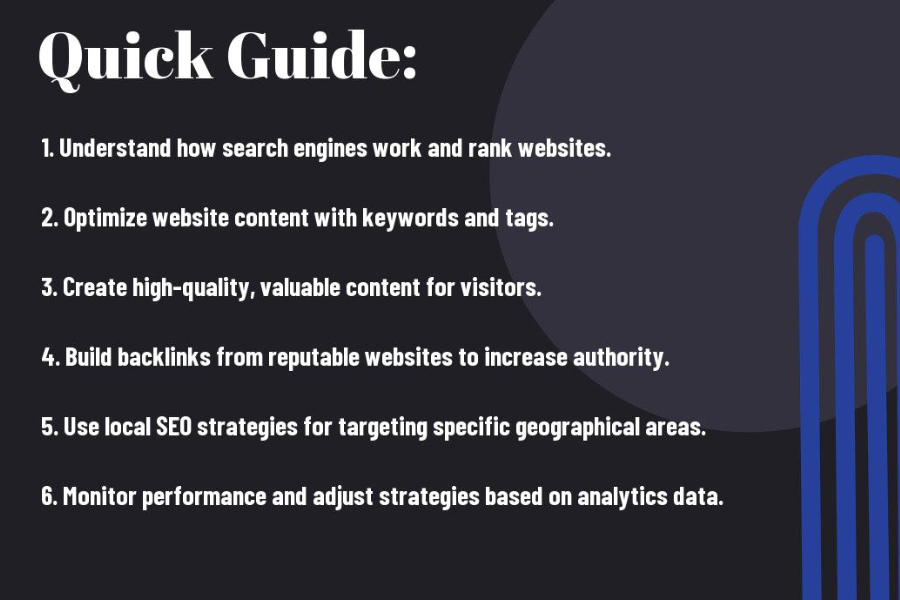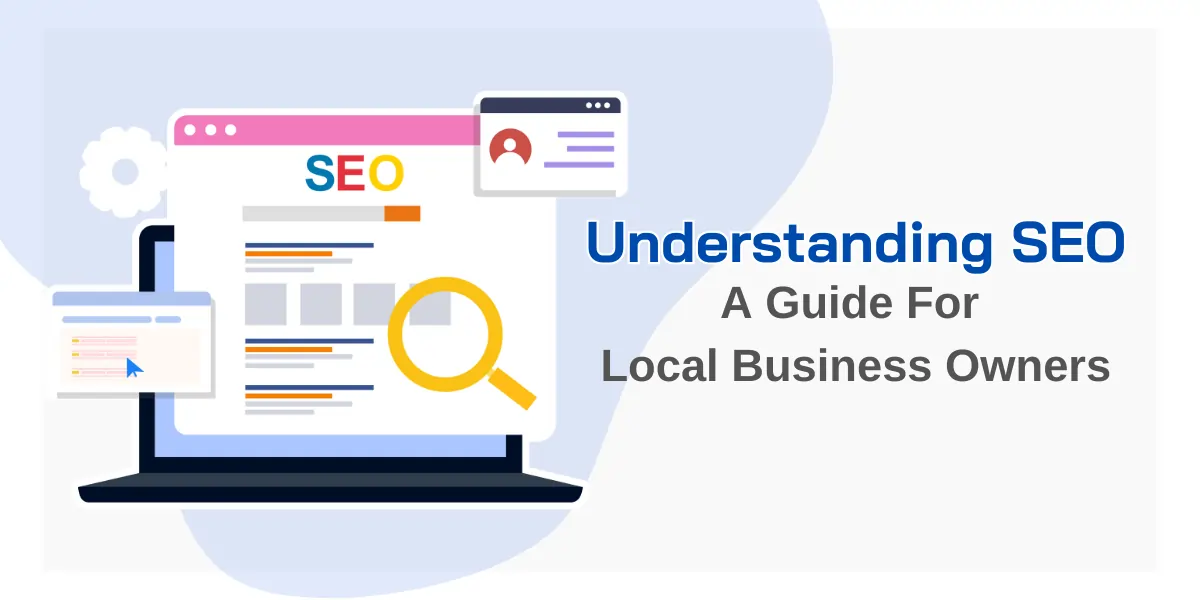There’s no denying the importance of Search Engine Optimization (SEO). From improving website visibility to driving organic traffic, learning SEO is crucial for local businesses looking to succeed online. This comprehensive guide is designed to help local businesses understand the intricacies of SEO and how to optimize their websites effectively. By following the tips and strategies outlined in this guide, you can elevate your online presence and attract more potential customers.
Key Takeaways:
- Keyword Research: Conduct thorough keyword research to identify the right keywords for your website content.
- On-Page SEO: Optimize your website’s on-page elements such as meta tags, headings, and content to improve search engine rankings.
- Local SEO: Utilize local SEO strategies to target a specific geographical area and attract local customers to your business.
- Link Building: Build high-quality backlinks from reputable websites to improve your website’s authority and search engine rankings.
- Mobile Optimization: Ensure your website is optimized for mobile devices to provide a seamless user experience and improve search engine visibility.
Understanding Search Engine Optimization
Before getting into the specifics of Search Engine Optimization (SEO), it’s crucial to understand what it is and how it works. SEO is the practice of optimizing your website to increase its visibility on search engine results pages (SERPs). This involves improving various aspects of your site to make it more appealing to search engines like Google, and Bing.
Types of SEO: On-Page, Off-Page, and Technical SEO
- On-Page SEO involves optimizing individual web pages to rank higher and earn more relevant traffic in search engines. This includes optimizing content, meta tags, headings, and images.
- Off-Page SEO focuses on improving the website’s reputation and authority through link building, social media marketing, and influencer outreach.
- Technical SEO ensures that search engine spiders can crawl and index your site effectively by optimizing factors like site speed, mobile-friendliness, and structured data.
After understanding the different types of SEO, you should develop a strategy that incorporates all three aspects to maximize your website’s visibility and performance on search engines.
Importance of SEO
Imagine your business with a beautifully designed website, but it does not appear in search engine results. People who are looking for services you offer, will not be able to find you. This is where SEO comes into play – it ensures that the website is not only visually appealing but also ranks well on search engines. Without SEO, the chances of your site being being found by potential customers are significantly reduced. Plus, a well-optimized website can attract organic traffic continuously, reducing the need for paid advertising campaigns. By implementing SEO best practices, you can improve the user experience, increase your website traffic, and ultimately drive conversions, making it a crucial component of any web design project.

Keyword Research and Planning
Factors to Consider When Choosing Keywords
Some key factors to consider when choosing keywords for search engine optimization include relevance to the content on the website, search volume, competition level, and user intent. These factors help ensure that the chosen keywords are aligned with what users are searching for and how likely they are to rank well in search engine results.
- Relevance to website content
- Search volume
- Competition level
- User intent
Understanding these factors and incorporating them into keyword planning is crucial for a successful SEO strategy.
Step-by-Step Guide to Conducting Keyword Research
| Step 1 | Step 2 |
| Start by brainstorming relevant topics and keywords related to your business. | Use keyword research tools like Google Keyword Planner, SEMrush, or Ahrefs to find relevant keywords with high search volume and low competition. |
Even with the abundance of tools available, it’s crucial to analyze and select keywords strategically to best optimize website content for search engines.
Tips for Creating Effective Keyword Lists
Another important aspect of keyword research is organizing and compiling an effective keyword list. This includes categorizing keywords based on relevance, search volume, and competition level. By creating a structured keyword list, it becomes easier to prioritize keywords and incorporate them into website content.
- Categorize keywords based on relevance
- Organize keywords by search volume and competition level
Keyword Clustering
In addition to categorizing and organizing your keywords, keyword clustering is another crucial technique. Keyword clustering involves grouping similar or related keywords into clusters. These clusters can then be used to create comprehensive content around a particular topic. For example, if you have a set of keywords related to “lawn care” you might cluster them into groups like “grass cutting,” “weed control,” and “fertilizing“.
After compiling a keyword list, the next steps involve integrating these keywords into website content effectively.

On-Page Optimization
Despite the importance of off-page SEO, on-page factors play a crucial role in determining a website’s search engine ranking. To get started with understanding on-page optimization, a comprehensive guide such as Mastering SEO: A Comprehensive Guide to Optimize Your WordPress Posts for Maximum Visibility can be very beneficial.
Optimizing Title Tags and Meta Descriptions
On-page optimization begins with crafting compelling title tags and meta descriptions that accurately reflect the content of a web page. These elements serve as the first impression for search engines and users, influencing click-through rates and overall search visibility.
Writing SEO-Friendly Website Content
SEO friendly content is key to on-page optimization. It involves creating high-quality, relevant content that incorporates target keywords naturally. By focusing on user intent and readability, you can improve your website’s search engine rankings and user engagement.
A well thought out content strategy that includes keyword research, topic relevance, and proper use of headers and formatting can significantly impact a website’s success. By consistently producing valuable content, you can establish authority in your niche and attract more organic traffic.
Image Optimization Techniques
Properly optimizing images by using descriptive filenames, relevant alt text, and compressed file sizes can improve a website’s loading speed and overall user experience.
By optimizing your images, you can enhance your site’s accessibility, organic search visibility, and user engagement. Search engines also take into account image optimization when ranking web pages, making it a vital component of on-page SEO.
Internal Linking Strategies
By strategically linking related pages within your website, you can distribute link equity, improve site navigation, and enhance the user experience.
Internal links help search engines crawl and index a website more effectively, leading to higher rankings and increased organic traffic. By creating a logical link structure and using anchor text strategically, you can boost your website’s SEO performance and visibility in search results.
Technical SEO
After learning the basics of SEO, venturing into the technical aspects is crucial for optimizing a your website. For a more comprehensive understanding of technical SEO, refer to The Comprehensive Guide to Search Engine Optimization.
Understanding Website Speed and Its Impact on SEO
There’s no denying the importance of website speed in the world of SEO. A slow-loading website can have a significant negative impact on user experience, resulting in higher bounce rates and lower search engine rankings.
Since 2010 Google has considered website speed as a ranking factor, making it vital for you to prioritize optimizing website performance for better SEO results.
Optimizing Page Load Speed
Speed is a crucial factor in SEO success. By optimizing your website’s page load speed, you can improve user experience, increase engagement, and boost search engine rankings. Below is a step-by-step guide to help optimize website speed:
Before Optimization: – Conduct a website speed test using tools like PageSpeed Insights or GTmetrix to identify areas for improvement.
Optimization Techniques: – Serve images in the webp format and compress them to reduce file sizes. I use a tool names Compress or Die to compress images to the smallest file size possible. Just the name of this tool indicates just how important it is to compress your photos and images. Minify CSS and JavaScript files to decrease loading times. To further enhance website speed, consider leveraging browser caching, reducing server response times, and optimizing code for better performance. If your website uses WordPress, there are free WordPress plugins such as Autoptimize to help optimize your website.
Mobile-Friendliness and Responsiveness in WordPress
To achieve optimal SEO results, you must ensure that your WordPress website is mobile-friendly and responsive. Mobile devices account for a significant portion of internet traffic, and search engines like Google prioritize mobile-friendly websites in their rankings. Understanding the importance of mobile-friendliness, you can use a responsive template to ensure that your website adapts seamlessly to various screen sizes and devices.
SSL Certificates and HTTPS: Pros and Cons
Using SSL and HTTPS on your website is crucial for maintaining security and building trust with users. SSL (Secure Sockets Layer) encrypts the data transferred between the server and the user’s browser, protecting sensitive information such as passwords and credit card details from being intercepted by malicious actors.
HTTPS (HyperText Transfer Protocol Secure) indicates that a website is using SSL, providing a visual cue (the padlock icon) to users that their connection is secure. Additionally, search engines like Google prioritise websites with HTTPS in their rankings, potentially increasing visibility and traffic.
Your web hosting company should provide SSL certificates for free, however it is up to your to ensure that all of your website URLs use HTTPS instead of HTTP.
Off-Page Optimization
Understanding Backlinks and Their Importance
Backlinks are links from external websites that lead back to your website. They are crucial for search engine optimization as they signal to search engines that your site is trustworthy and authoritative. The quality and quantity of backlinks can significantly impact your site’s ranking in search engine results.
Step-by-Step Guide to Building High-Quality Backlinks
One effective strategy for building high-quality backlinks is guest blogging. By reaching out to relevant websites in your industry and offering to write a guest post, you can secure valuable backlinks to your site. Another method is to create shareable content that other websites will want to link back to, such as infographics or comprehensive guides.
| Step | Description |
| 1 | Identify websites in your industry for guest blogging opportunities. |
| 2 | Create valuable content that other websites will want to link back to. |
To build high-quality backlinks, consistency is key. Regularly updating your content and reaching out to relevant websites can help you establish a strong backlink profile that boosts your site’s SEO performance.
Local SEO Factors: Google My Business and Online Directories
Google My Business and online directories play a crucial role in local SEO. By creating and optimizing your Google My Business profile, you can improve your chances of appearing in local search results. Additionally, listing your business on online directories like Yelp and Yellow Pages can help increase your online visibility and reach a larger local audience.
Ensuring that your business’s information is consistent across all platforms can enhance your credibility and trustworthiness in the eyes of both search engines and potential customers.

Reviews and Ratings: How They Impact Local SEO
Positive reviews can improve your business’s reputation and visibility in local search results, while negative reviews can have the opposite effect. Encouraging satisfied customers to leave reviews and promptly addressing any negative feedback can help you maintain a positive online presence.
You should prioritize managing your online reputation to ensure that reviews and ratings positively impact your local SEO efforts. By actively monitoring and engaging with customer feedback, your can build trust with your audience and improve your search engine visibility.
Advanced SEO Techniques
Once again, understanding SEO techniques is crucial for maximizing a website’s visibility and ranking on search engine results pages. Here are some advanced techniques that can take your SEO game to the next level:
- Technical SEO Audits and Tools
Audits play a crucial role in identifying technical issues and opportunities for improvement on a website. By utilizing various SEO tools, you can conduct detailed audits to optimize your website’s technical issues. Tools such as Screaming Frog, SEMrush, and Google Search Console can provide valuable insights into your website performance and technical SEO elements - Advanced Link Building Strategies
For advanced link building strategies, you should focus on acquiring high-quality backlinks from authoritative websites in the same industry or niche. - Video SEO and YouTube Optimization
Building on the foundation of traditional SEO, video SEO involves optimizing video content for search engines and enhancing visibility on YouTube. By incorporating relevant keywords, creating engaging thumbnails, and crafting compelling video descriptions, you can drive traffic and improve rankings through video content.
Summing up
The guide breaks down complex SEO strategies into easy-to-understand steps. By providing insights into website optimization, content creation, keyword research, and local SEO techniques, local business owners can use it as a DIY guide to enhance their online presence and drive more organic traffic to their websites.
You may also choose to hire a professional web designer to build your website for you.
Frequently Asked Questions
Search Engine Optimization (SEO) is the practice of increasing the quantity and quality of traffic to your website through organic search engine results.
SEO is important because it helps improve the visibility and ranking of your website in search engine results, driving more traffic and potential customers to your site.
The key elements of SEO include keyword research, on-page optimization, technical SEO, link building, and content creation.
Local SEO helps businesses improve their online visibility in local search results, connect with local customers, and increase foot traffic to physical stores or service areas.
Best practices for optimizing a website for local SEO include optimizing Google My Business listing, creating local content, obtaining local backlinks, and ensuring consistent NAP (Name, Address, Phone number) information.
You can measure the success of your SEO efforts using tools like Google Analytics to track organic traffic, keyword rankings, conversion rates, and other relevant metrics.
Common SEO mistakes to avoid include keyword stuffing, ignoring mobile optimization, neglecting local SEO, not optimizing meta tags, and neglecting regular content updates.
I am a freelance web designer and developer. I have been involved in website design since 1998. I specialize in Local SEO for service-based businesses, and I am committed to helping my clients outrank their competition.

